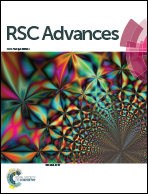Long-lived Néel states in antiferromagnetic quantum spin chains with strong uniaxial anisotropy for atomic-scale antiferromagnetic spintronics
Abstract
It has been experimentally established that magnetic adatoms on surfaces can be arranged to form antiferromagnetic quantum spin chains with strong uniaxial anisotropy and Neel states in such spin systems can be used to realize information storage. Here, we investigate eigenstates, quantum spin dynamics, and life times of Neel states in short antiferromagnetic quantum spin chains with strong uniaxial anisotropy on the basis of numerical exact diagonalization method. We show rigorously that as long as the uniaxial anisotropy is very strong, the ground state and the first excitation state, being nearly degenerate, are safely separated from the other states and thus dominate the quantum dynamics of the Neel states. Through further numerical analysis, we achieve a powerful life-time expression of the Neel states for arbitrary spin and model parameters. It is interesting that for the famous Fe adatom chains on Cu2N surface, 14 or 16 Fe adatoms are enough to obtain a practical long life-time for Neel state storage of information. These should be applicable to other similar antiferromagnetic spin systems for atomic-scale antiferromagnetic spintronics.


 Please wait while we load your content...
Please wait while we load your content...